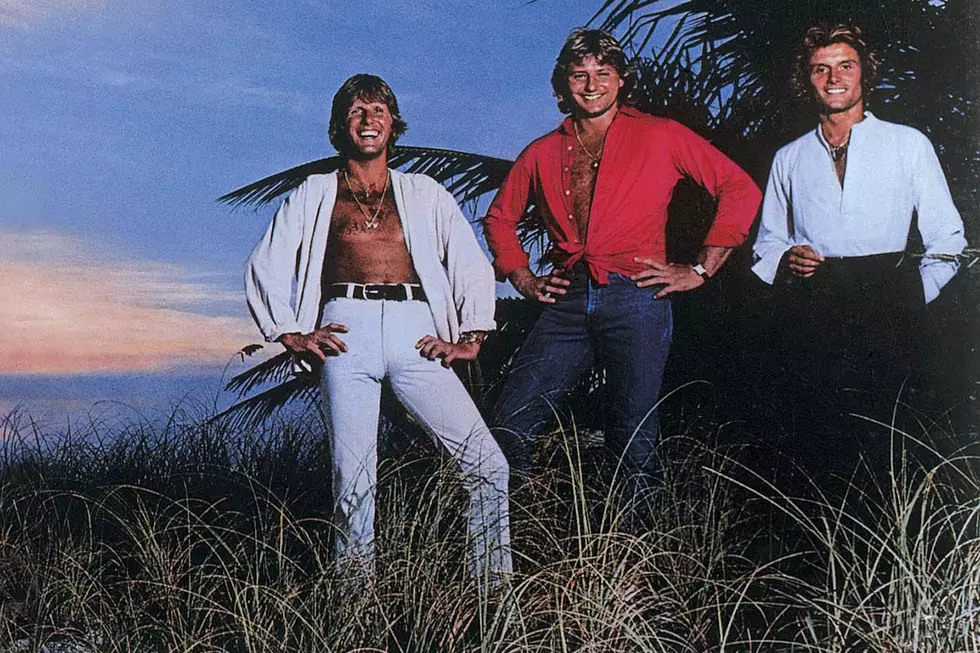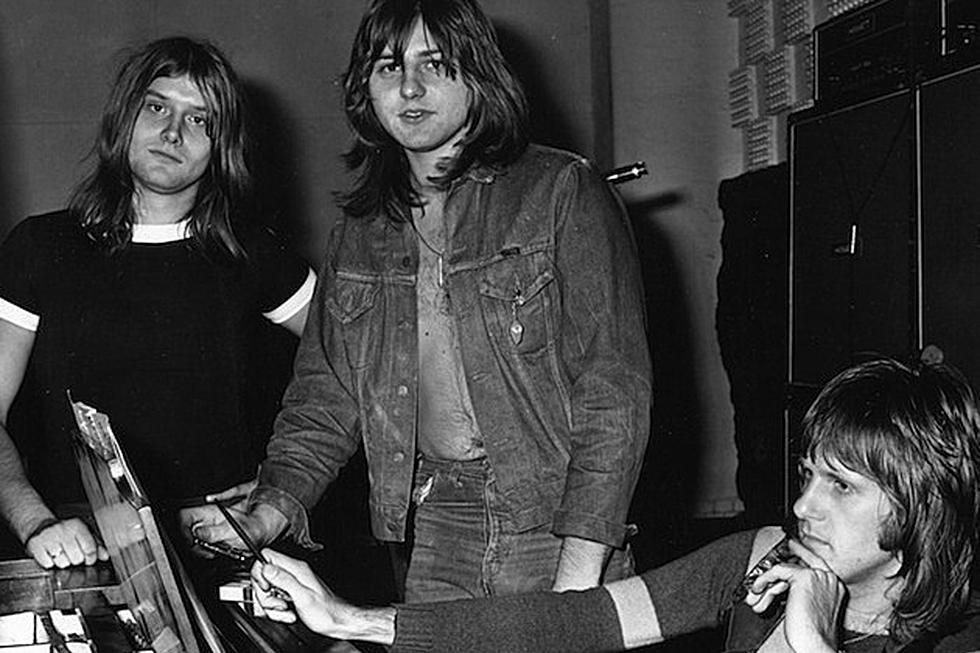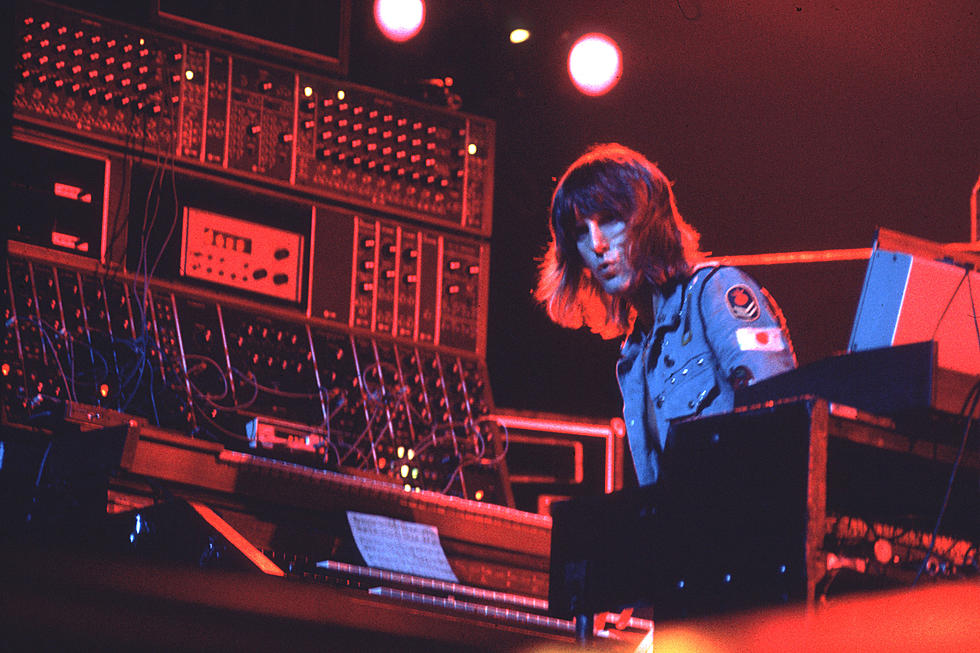
Top 10 Emerson Lake & Palmer Songs
Prog-rock was never an easy sell to mainstream audiences. Something about 23-minute songs that go on and on and on about celestial gods never quite caught on with Top 40 fans. But somehow Emerson, Lake & Palmer managed to place a few songs on the Billboard charts in the '70s. The seven studio albums and two live records they released during their peak years all went gold.
But the trio never fit squarely into rock's confines anyway. Keyboardist Keith Emerson filled his long, winding solos with classical references that went over the heads of many bong-toking listeners. Indeed, the group's 1971 Top 10 album Pictures at an Exhibition was based on Russian composer Modest Mussorgsky's 1874 piano piece.
Our list of the Top 10 Emerson, Lake & Palmer Songs includes some of those heady classically inspired works and some of their heavier prog tracks, as well as some of the rare moments when they lightened up and let down their long, flowing hair a little.
- 10
"Trilogy"
From: 'Trilogy' (1972)The nine-minute centerpiece, and title track, to the trio's highest-charting studio album takes almost three minutes to kick in. The lengthy intro features guitarist / singer Greg Lake getting his classical-music voice on while Emerson pounds away on piano keys. But then a swarm of synths ushers in a typically complicated time signature that eventually gives way to a percussion tour de force by drummer Carl Palmer.
- 9
"Peter Gunn"
From: 'In Concert' (1979)Henry Mancini's familiar theme for the popular detective show from the late '50s and early '60s gets a synth-fueled update. But the trio still stays pretty faithful to the song's core arrangement. "Peter Gunn" served as Emerson, Lake and Palmer's show opener for a number of years. The version from 1979's In Concert was released as a single but didn't chart.
- 8
"Hoedown"
From: 'Trilogy' (1972)The instrumental "Hoedown" was penned by composer Aaron Copland for his 1942 opera Rodeo. And like most Copland compositions, "Hoedown" is big, brash and showoffy -- perfect for Emerson, Lake & Palmer, who adapted the piece for their 1972 album Trilogy. It's the only song on the group's third album not written by a member of the trio, but they have such fun with it (especially in concert) that it sounds like a natural fit on the LP.
- 7
"Jerusalem"
From: 'Brain Salad Surgery' (1973)Like a few tracks on our list of the Top 10 Emerson, Lake & Palmer Songs, "Jerusalem" was adapted by the trio from an ancient source. In this case, both a hymn by British composer Hubert Parry and a poem by William Blake inspired the opening cut on the band's most popular album. Emerson's innovative use of a Moog synthesizer on the song is a pretty historical moment as far as these things go.
- 6
"From the Beginning"
From: 'Trilogy' (1972)This acoustic number from Trilogy is first a showcase for Lake, who yields the song's final minute to Emerson, who glides across the guitars and softly rattling percussion with a storm of keyboard squiggles. It makes for a jarring but pleasant break. Still, "From the Beginning" became Emerson, Lake & Palmer's highest-charting single, climbing to No. 39.
- 5
"Nut Rocker"
From: 'Pictures at an Exhibition' (1971)Based on Tchaikovsky's "March of the Wooden Soldiers" from The Nutcracker, this modern-day arrangement was originally recorded by a studio group called B. Bumble and the Stingers in 1962. Emerson, Lake & Palmer used it as the final movement on their high-concept 1971 live album Pictures at an Exhibition. Lake reportedly hated this piece, a showcase for Emerson. But it managed to make it to No. 70 on the chart. Plus, it's kinda fun.
- 4
"Fanfare for the Common Man"
From: 'Works, Volume 1' (1977)Like "Hoedown" (see No. 8 on our list of the Top Emerson, Lake & Palmer Songs), "Fanfare for the Common Man" was composed by Aaron Copland. This piece was adapted by ELP for their ambitious 1977 LP Works, Volume 1, in which each member received a side of the record to show off, with the remaining one shared by the trio. "Fanfare for the Common Man" comes from side four and is one the album's highlights.
- 3
"Tarkus"
From: 'Tarkus' (1971)"Tarkus" is one of the trio's most ambitious pieces, a seven-part, 20-minute, sidelong suite that opens their second album. In fine prog-rock fashion, the album tells some sort of story about post-apocalyptic warfare waged by a weapons-equipped armadillo ... or does it? Who knows? Who cares? Tarkus is total proggy awesomeness.
- 2
"Lucky Man"
From: 'Emerson, Lake & Palmer' (1970)The trio's first single sounds little like anything else in the ELP catalog. Maybe because Lake wrote the song when he was only 12. Also possibly because it's a restrained performance by the group ... until the final minute, when Emerson clears out the soft acoustic touches with his super-intense farting Moog.
- 1
"Karn Evil 9"
From: 'Brain Salad Surgery' (1973)Emerson, Lake & Palmer's best and most popular piece actually is made up of four parts spread over two LP sides that clock in at nearly half an hour. The most popular section is "First Impression, Pt. 2," which includes the famous intro -- "Welcome back, my friends, to the show that never ends" -- that became the title of the group's highest-charting album, a live record from 1974. But try to take in the entire 30-minute piece. It's epic prog-rock at its best, without too much of the usual sour aftertaste.
More From Ultimate Classic Rock









